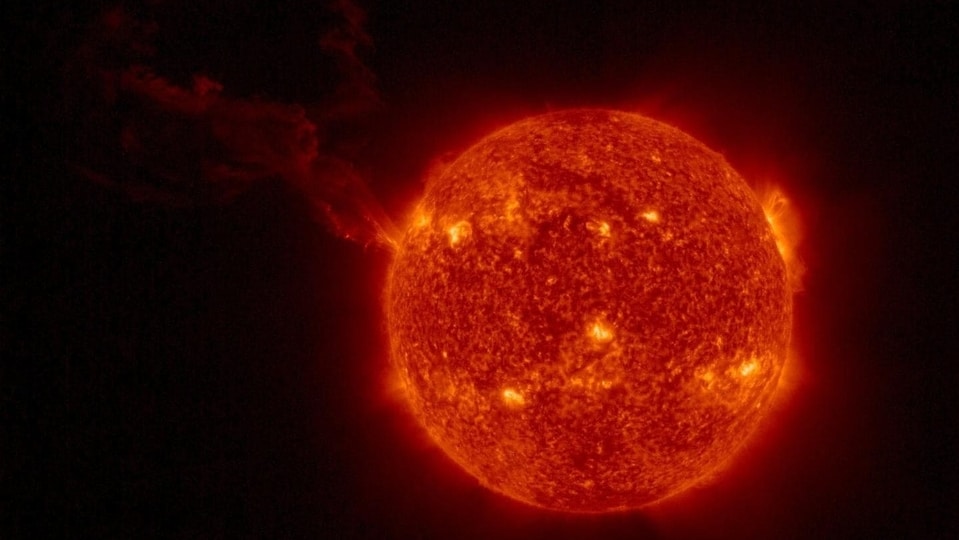Scary Solar Storm to HIT on July 6 after “cyclops-like” sunspot blasts solar winds towards Earth
A big solar storm will be hitting the Earth tomorrow, July 6, after a “cyclops-like” sunsport ejected out a large amount of solar material. Find out how it can affect us.

The Sun's wrath continues as yet another solar storm is set to make its way towards the Earth. According to reports, a solar storm will be hitting the Earth tomorrow, July 6. The incoming solar storm resulted from a “cyclops-like” sunspot in the Sun's atmosphere that ejected a large amount of solar particles towards the Earth. Now, the traveling particles, also known as solar wind, are set to hit the Earth. The resultant geomagnetic storm can cause shortwave radio blackouts as well as display auroral projections. However, the question is whether it is strong enough to cause extended damage to the communication network or the satellites. Read on to find out.
The report comes in from SpaceWearther.com, which said that there is a possibility of a solar storm tomorrow. Confirming the data from National Oceanic and Atmospheric Administration (NOAA), it posted on its website, “NOAA forecasters say there is a chance of minor G1-class geomagnetic storms on July 6th when a stream of solar wind is expected to hit Earth's magnetic field. The gaseous material is flowing from a cyclops-like hole in the sun's atmosphere”.
Solar Storm to hit the Earth tomorrow
With a G1 classification, which denotes solar storms of the weakest variety, the incoming magnetic flux is not likely to damage the satellites or GPS systems. However, there is a possibility of radio disruption for shortwave frequencies and amateur radio. NOAA classifies solar storms into 5 categories, through G1 to G5, where a G5 solar storm like the Carrington event can not only damage satellites, affect the internet and mobile network, but it can also mess up electronic gadgets and cause power grid failures. Worse still, it can also cause forest fires due to its highly charged radiation.
Both the intensity and frequency of solar storms have increased in the recent past as the solar activity increases inside the Sun. The Sun follows an 11 years long solar cycle and it is approaching its solar maximum phase, where it is most active and can cause violent solar storm incidents. Just last week, NASA reported a rare phenomenon where two different solar winds hit the Earth, causing the magnetosphere to crack open and let in dangerous solar radiation. While the surprise solar storm was not strong enough to cause any disruption to GPS or satellites, it did cause a surprise aurora for people in the higher latitudes to enjoy.
Catch all the Latest Tech News, Mobile News, Laptop News, Gaming news, Wearables News , How To News, also keep up with us on Whatsapp channel,Twitter, Facebook, Google News, and Instagram. For our latest videos, subscribe to our YouTube channel.
































